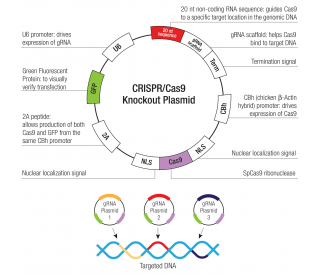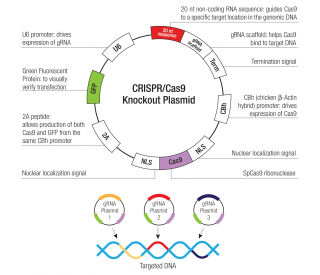详细说明
Species Reactivity
Human, Mouse
Specificity
Detects human CXCR7/RDC-1 in flow cytometry of five distinct human CXCR7 transfectants, but not their respective parental lines.
Source
Monoclonal Mouse IgG 1 Clone # 11G8
Purification
Protein A or G purified from hybridoma culture supernatant
Immunogen
Human CXCR7 encoding plasmid
Accession # P25106Formulation
Supplied in a saline solution containing BSA and Sodium Azide.
Label
Allophycocyanin
Applications
Recommended
ConcentrationSample
Flow Cytometry
10 µL/10 6 cells
See below
Please Note: Optimal dilutions should be determined by each laboratory for each application. are available in the Technical Information section on our website.
Data Examples
Flow Cytometry | Detection of CXCR7/RDC‑1 in MCF‑7 Human Cell Line by Flow Cytometry. MCF‑7 human breast cancer cell line was stained with Mouse Anti-Human/Mouse CXCR7/RDC‑1 APC‑conjugated Monoclonal Antibody (Catalog # FAB4227A, filled histogram) or isotype control antibody (Catalog # , open histogram). View our protocol for . |
Preparation and Storage
Shipping
The product is shipped with polar packs. Upon receipt, store it immediately at the temperature recommended below.
Stability & Storage
Protect from light. Do not freeze.
12 months from date of receipt, 2 to 8 °C as supplied.
Background: CXCR7/RDC-1
The G protein-coupled receptor, RDC1, belongs to a subgroup of chemokine receptors and has been designated CXCR7. CXCR7 can bind with high-affinity to CXCL12/SDF-1 and CXCL11/I‑TAC. It is also a co-receptor for several HIV and SIV strains. In their N-termini and extracellular loops 1, 2, and 3, human and mouse CXCR7 share 84%, 100%, 96%, and 86% amino acid sequence identity, respectively. Reports of mRNA levels and/or protein expression (as assessed using anti-CXCR7, clone 9C4) (J. Biol. Chem. 2005, 280(42):35760, J. Immunol. 2006, 176(4):2197) indicate that CXCR7 occurs on a wide variety of tissues and cells including monocytes, B cells, T cells and mature dendritic cells. In contrast, based on ligand binding analysis and receptor level (as assessed using anti-CXCR7, clone 11G8), surface expression of CXCR7 was reported to be restricted to tumor cells, activated endothelial cells, fetal liver cells, and few other cell types (J. Exp. Med. 2006, 203(9):2201). The basis of these inconsistent observations is not known but may be attributed to cell context and the use of different antibodies that may recognize different epitopes.
Entrez Gene IDs:
57007 (Human); 12778 (Mouse); 84348 (Rat)
Alternate Names:
ACKR3; chemokine (C-X-C motif) receptor 7; Chemokine orphan receptor 1CMKOR1C-X-C chemokine receptor type 7; CMKOR1; CXCR7; CXC-R7; CXCR-7; G protein-coupled receptor; GPR159; GPR159G-protein coupled receptor 159; RDC-1; RDC1G-protein coupled receptor RDC1 homolog







![Anti-CARD11 antibody [EPR2557] 100µl](https://yunshiji.oss-cn-shenzhen.aliyuncs.com/202407/25/ryuecwsu03m.jpg)
![Anti-CARD11 antibody [EPR2557] 40µl](https://yunshiji.oss-cn-shenzhen.aliyuncs.com/202407/25/0l4lvuuesv1.jpg)

![Anti-Caspase-9 antibody [E23] 100µl](https://yunshiji.oss-cn-shenzhen.aliyuncs.com/202407/25/3jnd4412gqi.jpg)

![Anti-CKS2 antibody [EPR7946(2)] 100µl](https://yunshiji.oss-cn-shenzhen.aliyuncs.com/202407/25/cfdt44gkqre.jpg)



 粤公网安备44196802000105号
粤公网安备44196802000105号